Types of Watch Backs: A Beginner’s Guide
When it comes to watches, the watch back is often overlooked. However, the type of back a watch has can greatly impact its function, appearance, and maintenance. From screw-down to exhibition watch backs, each type offers different features and benefits. In this blog post, we will be discussing the different types of watch backs and their characteristics, so you can make an informed decision when purchasing your next timepiece. we will also explain how you can open any watch back at home easily for maintenance or any other purposes. Happy reading!
Note: Watch case back or watch back both words are used to describe the back of the watch.
Let’s start with the most common watch-back type, the screw-down watch back.
Contents
1. Screw-Down Watch Back
This type of watch back is screwed into the watch case and creates a water-resistant seal. Screw-down watch backs are commonly found on dive watches and other water-resistant watches. It is more secure than a snap-off watch back, but it also makes the watch more difficult to open for maintenance or battery replacement.
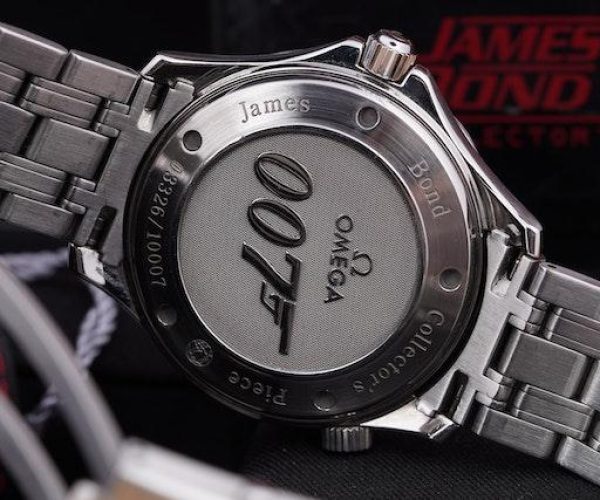
It’s important to have a professional watchmaker open a screw-down watch back, as improper opening can scratch the watch or damage the water resistance feature. After discussing all types, we’ll go over how you can open any watch back at home in detail. Now we move on to the next watch back, the snap-off watch back.
2. Snap-off Watch Back
The snap-off watch back is named for its distinctive feature of easily snapping on and off the watch case. It typically has a smooth, flat surface with no visible screws or protrusions. Snap-off watch backs are common on dress watches and other non-water-resistant watches. They are easy to open for maintenance or battery replacement, but they do not provide the same level of water resistance as a screw-down watch back.
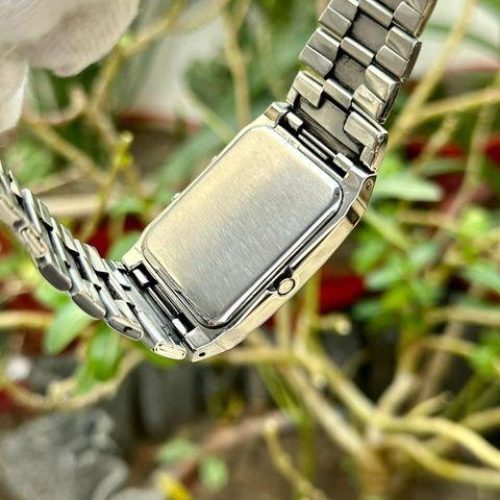
One of the main benefits of a snap-off watch back is its ease of access. Unlike a screw-down watch back, which mostly requires special tools to open, a snap-off watch back can usually be opened with a simple tool such as a coin or a small screwdriver.
3. Exhibition Watch back
An exhibition watch back, also known as a display watch back, is a type of watch back that is transparent, typically made of sapphire crystal, and allows you to see the inner workings of the watch movement. Exhibition watch backs are typically found on luxury or high-end mechanical watches and are less water-resistant than screw-down case back. They are also not recommended for people who will be doing manual labor or other activities that may damage the watch movement.
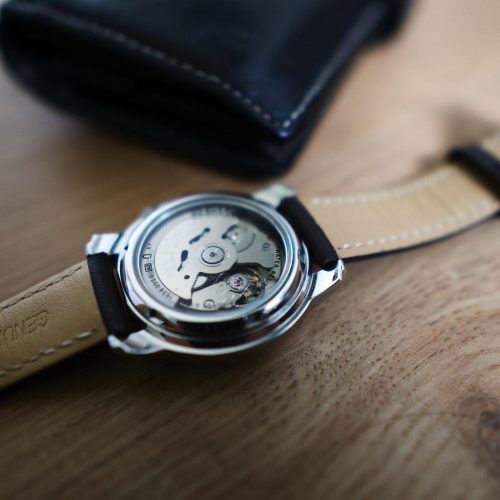
One of the main benefits of an exhibition watch back is that it allows the wearer to see the inner workings of the watch. This can be a great conversation starter and it also allows the wearer to appreciate the craftsmanship that goes into the watch. It also gives the watch a unique and sophisticated look.
4. Watch Back With Screws
Also, known as a 4 screw watch back, but some watches also come with a case back of more than 4 screws like 5 or 6. As the name suggests a 4 screw watch back is a type of watch back that is held in place by four screws, typically located at the corners of the case back. Similar to a screw-down watch back, a 4 screw watch back provides a secure seal for the watch movement, which helps to protect the watch from water and dust.
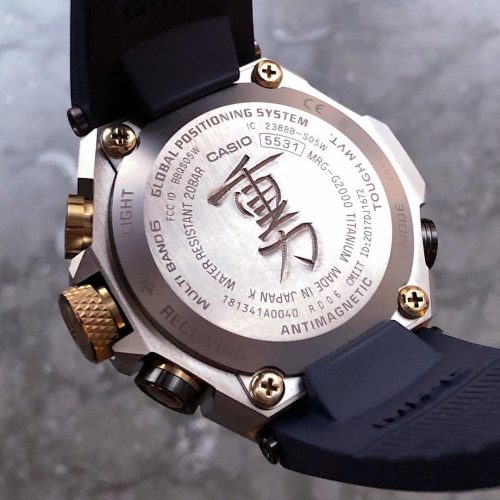
When determining whether a screw-down or four-screw watch back is more water resistant, a screw-down watch back is generally considered to be more water resistant. This is because the screw-down watch back provides additional reinforcement to the case back, creating a more secure seal that is less likely to be compromised by water.
5. Solid Watch Back
Opposite to exhibition watch back, a solid watch back is non-transparent and typically made of metal, such as stainless steel. It is another most common watch back type and it is used in a variety of watches, including sport, dress, and everyday wear watches.
One of the main benefits of a solid watch back is that it provides a secure and protective barrier for the watch movement. Another benefit of a solid watch back is that it can be engraved with the name of the watch company, serial number, personal messages, or designs, adding a touch of authenticity, exclusivity, and elegance to the timepiece.
6. Rolex Oyster Watch Back
The Rolex Oyster watch back, as the name implies, is mainly used on certain Rolex Oyster models. It features a grooved design that provides a tight seal and enhances the watch’s water resistance. The grooves also add a decorative element to the back of the watch.
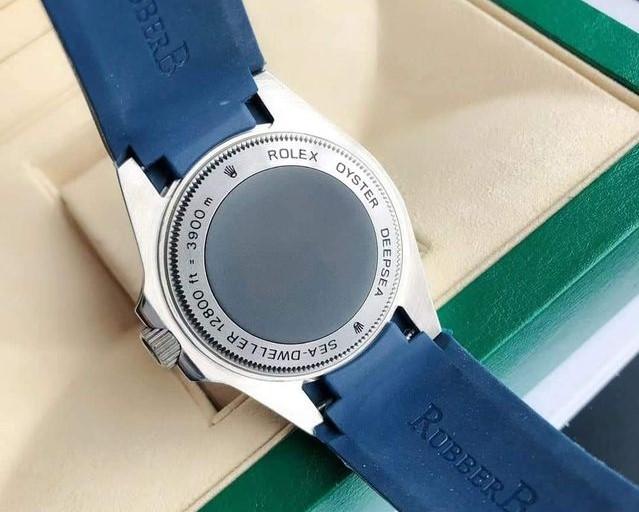
The Rolex crown logo is typically engraved in the center of the caseback, along with other relevant information such as the watch’s model number and serial number. Overall, the Rolex Oyster grooved caseback combines both function and aesthetics, making it a signature element of Rolex’s iconic Oyster line of watches.
7. Hunter Watch Back
A hunter watch back is hinged and can be opened like a lid, allowing the wearer to view the movement inside. The watch’s back is typically closed with a locking mechanism, such as a button or a latch, which keeps it securely in place.
Hunter watch back is a popular design choice for pocket watches, as it makes it easy to view the movement inside. It also provides protection for the watch movement, as the case back can be closed when the watch is not in use.
Hunter case back is also used in some wristwatches, typically in the form of a hunter-style watch, which is a type of watch that features a hunter case back and a flip-open cover on the front of the watch.
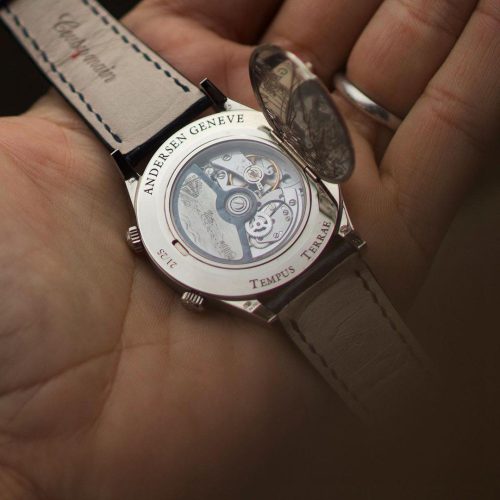
Image Source: Instagram | @andersengeneve
Hunter case back watches are popular among collectors and watch enthusiasts as they allow the wearer to see the movement of the watch, but keep it protected when not in use.
How To Remove Watch Backs?
The method for opening a watch case back can vary depending on the type of case back and the specific watch. Before we get into how to remove watch backs, let’s talk about why we need to.
Why Do We Need To Remove Watch Backs?
In general, you do not need to remove the watch case back unless you perform a specific task or maintenance requiring access to the inside of the watch. For example, if your watch is battery-powered and the battery needs to be replaced, you will need to remove the case back to access the battery compartment. If you suspect that your watch is not holding its water resistance or if the watch is not functioning correctly, you may need to remove the case back to check for any damage or debris that might be preventing the watch from functioning properly.
Some people want to remove the case back just to observe the mechanism or movement inside the watch. However, this is not recommended at all as improper techniques can damage the watch or void the warranty. If you need to remove the case back for genuine reasons, follow the instruction below.
How You Can Remove The Watch Back At Home?
While it is generally recommended to seek the help of a professional watchmaker or jeweler when opening a watch back, there are a few easy ways to do it at home, although it is important to note that these methods may not work for all types of watch backs, and may scratch your watch if not done properly. Here are a few general methods for opening different types of watch case backs at home:
Snap-off watch back: If your watch has a snap-off watch back, you can try using a small flathead screwdriver or butter knife to gently pry the case back open. Insert the tool into the groove around the edge of the case back and gently lift it.
Screw-down watch back: If your watch has a screw-down back, you can try using a pair of pliers to gently unscrew the back. Be sure to grip the case back firmly and turn it counterclockwise. You can also use the tweezers to unscrew the back. It is important to note that this method has a high risk of scratching the case back so do it carefully. If the case back is not very tightly secured, you can use a rubber ball to help unscrew the case back. All you need to do is to put the rubber ball on the back of the watch and gently push it and try to unscrew the case back by turning the rubber ball counterclockwise.
4-Screw watch back: If your watch has a 4-screw case back, you can try using a small flathead screwdriver to gently remove the screws. Once all screws are removed, the case back should come off.
To avoid any risk of scratching your watch, you can use tools dedicated to removing the watch back.
Conclusion
In conclusion, watch backs come in a variety of types, each with its unique features and benefits. Screw-down case backs provide a high level of water resistance and security, snap-off case backs are easy to remove and replace, exhibition case backs offer a glimpse into the inner workings of the watch, and solid case backs are a great option for custom engraving.
When it comes to opening a watch case back, it’s important to use the right tools and techniques to avoid damaging the watch. If you’re not familiar with the process or if the watch has a higher value or sentimental value, it’s best to consult a professional watchmaker or jeweler for guidance.
If you have any questions, please feel free to ask in the comments section below. We will try to answer as soon as possible.
Great overview of different watch back types! I’m of the opinion that see-through casebacks should become standard on all mechanical watches. Being able to view decorative movements is part of what makes mechanical watches so fascinating compared to quartz.
Thanks for sharing your precious opinion.